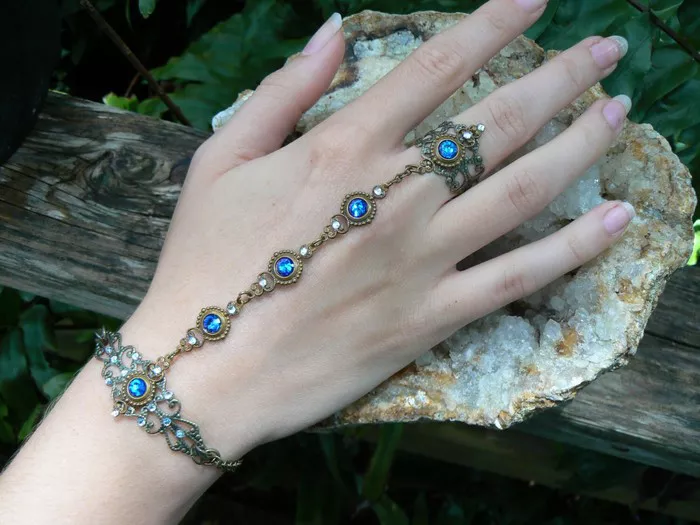The world of fashion often intertwines with complex historical and cultural narratives, sometimes bearing terminologies that reflect deeper societal contexts. Among such terms, “slave bracelets” stand out, evoking curiosity and prompting questions about their origin, significance, and appropriateness. In this article, we delve into the historical roots, cultural implications, contemporary perceptions, and alternative terminologies of these adornments.
Historical Origin: Unraveling the Past
The term “slave bracelet” traces its origins to the colonial era when the transatlantic slave trade flourished. During this period, Africans were forcibly taken from their homeland and sold into slavery, enduring unimaginable suffering and exploitation. While the term “slave bracelet” might suggest a direct association with this dark chapter of history, its etymology is more nuanced.
The bracelet’s name is believed to have derived from its design rather than any explicit connection to slavery. Historically, these bracelets featured intricate chains or loops that encircled the wrist and connected to a ring worn on the finger. The chain resembled shackles or chains commonly associated with enslaved individuals, thus leading to the term “slave bracelet.” However, it’s essential to recognize that the term primarily refers to the design rather than any endorsement of slavery.
As time progressed, the term became ingrained in fashion terminology, losing much of its direct historical connotation. Nevertheless, its origin serves as a reminder of the atrocities of the past and the importance of contextualizing language within its historical framework.
Cultural Significance: Symbolism and Meaning
Beyond its historical connotations, the slave bracelet holds cultural significance in various contexts. In some cultures, jewelry, including bracelets, carries symbolic meaning, representing status, wealth, or cultural identity. The intricate designs and craftsmanship of slave bracelets often evoke admiration and appreciation for the artisan’s skill.
Moreover, the wearing of bracelets has been associated with rituals, ceremonies, and rites of passage in many cultures worldwide. From weddings to coming-of-age ceremonies, bracelets play a significant role in cultural traditions, symbolizing unity, commitment, or spiritual beliefs.
However, it’s crucial to acknowledge that the term “slave bracelet” may evoke discomfort or offense due to its association with slavery. While the design itself may be aesthetically appealing, its nomenclature can inadvertently evoke painful historical memories for some individuals.
Contemporary Usage: Evolution and Perception
In contemporary society, the term “slave bracelet” has garnered scrutiny and debate, prompting discussions about its appropriateness and sensitivity. With growing awareness of historical injustices and a heightened focus on cultural sensitivity, many individuals and communities have questioned the continued use of the term.
Some argue that retaining the term perpetuates insensitivity towards the suffering of enslaved peoples and reinforces harmful narratives. Others contend that the term has evolved beyond its historical origins and is now primarily associated with a style of jewelry rather than slavery.
In response to these concerns, there has been a shift towards more inclusive and respectful language within the fashion industry. Brands and designers are increasingly opting for alternative terms such as “hand chain,” “hand bracelet,” or “connected bracelet” to describe similar jewelry pieces. These terms aim to distance the accessories from any association with slavery while still conveying their design and function.
Moreover, initiatives promoting cultural awareness and sensitivity training have encouraged individuals and businesses to reconsider their language and practices concerning terminology that may carry offensive or insensitive connotations. By fostering dialogue and understanding, society can move towards more inclusive and respectful language that reflects diverse perspectives and histories.
Alternative Terms: Embracing Sensitivity and Inclusivity
In light of the discussions surrounding the term “slave bracelet,” several alternative terms have emerged to describe similar jewelry pieces. These terms aim to convey the design and function of the accessory without evoking the painful legacy of slavery. Some of the alternative terms include:
1. Hand Chain: This term highlights the bracelet’s design, emphasizing the interconnectedness between the wrist and finger.
2. Hand Bracelet: Simple and straightforward, this term describes the accessory’s placement on the hand without invoking any potentially offensive connotations.
3. Connected Bracelet: Focusing on the bracelet’s feature of being connected or linked between the wrist and finger, this term avoids any reference to slavery.
4. Finger-to-Wrist Bracelet: Descriptive and precise, this term clarifies the bracelet’s design while steering clear of any controversial terminology.
These alternative terms offer more inclusive and respectful language options for describing these accessories, reflecting a broader societal commitment to cultural sensitivity and awareness.
Conclusion
The terminology surrounding “slave bracelets” underscores the complex interplay between language, history, and culture within the realm of fashion. While the term’s historical origin lies in the design of the bracelet rather than explicit references to slavery, its continued usage raises important questions about sensitivity and inclusivity.
By exploring alternative terms and fostering dialogue about the implications of language, we can navigate the intersection of fashion, history, and cultural sensitivity more thoughtfully. Ultimately, our choice of language reflects our commitment to acknowledging and honoring diverse perspectives and histories, ensuring that our words resonate with respect, empathy, and understanding.

